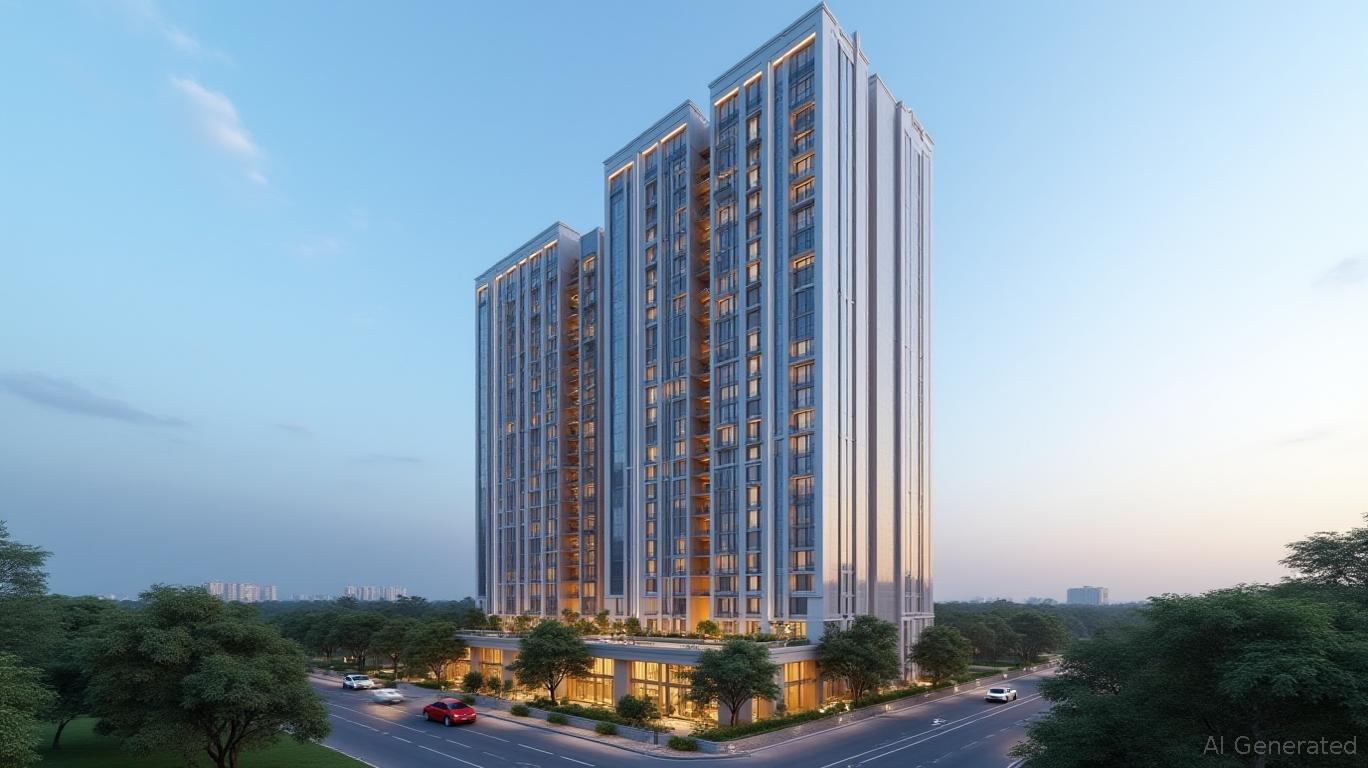AInvest Newsletter
Daily stocks & crypto headlines, free to your inbox
Sobha Limited, one of India's
real estate developers, has set an ambitious target of achieving ₹10,000 crore in sales for FY26—a 60% jump from its FY25 sales of ₹6,277 crore. While macroeconomic headwinds and competitive pressures loom, the company's robust project pipeline, capital strength post a ₹2,000 crore rights issue, and strategic market expansions position it to defy risks and seize growth opportunities.
To reach ₹10,000 crore, Sobha must grow sales by 30-35% year-on-year, a pace achievable only through flawless execution of its launch schedule and geographic diversification. Key drivers include:
1. A record residential pipeline: With 18.56 million sq ft across 18 projects in nine cities, including new markets like Mumbai and Greater Noida, Sobha has the scale to meet its target. Q1-FY26 launches in Greater Noida and Marina 1 (1.62 million sq ft) and Q2 launches in Gurugram and Bangalore (0.8 million sq ft) are critical to kickstart momentum.
2. Mumbai's luxury play: Sobha's entry into Mumbai—a market it aims to dominate with fully finished luxury properties—could add up to ₹10,000 crore in sales over the next five years. The first project, a 300,000-sq-ft luxury development, is slated for mid-2025, leveraging its Dubai model success.
3. Debt-free flexibility: The ₹2,000 crore rights issue, completed in Q4-FY25, reduced net debt to ₹630 crore (from ₹1,262 crore) and boosted cash reserves to ₹1,761 crore. This capital buffer allows Sobha to pursue acquisitions and land banks without over-leveraging.
Sobha's FY26 success hinges not just on sales volume but on margin expansion. Management projects a 33% embedded EBITDA margin on ₹15,873 crore of unrecognised revenue from sold units—a significant improvement from FY25's 9.8% EBITDA margin. This rise stems from phasing out lower-margin projects and focusing on premium segments like Mumbai's luxury market.
The average price realisation has already climbed 23% YoY to ₹13,412/sq ft in FY25, a trend likely to continue as Sobha targets high-income demographics. However, risks persist: slower absorption in competitive markets like Gurugram and delays in Mumbai's approvals could strain margins.
Despite risks, Sobha's fundamentals argue for a buy:
- Cash-rich balance sheet: Negative net debt and ₹6,184 crore in operational cash flow provide resilience.
- Pipeline visibility: 50 million sq ft of projects in the pipeline by FY26 ensure a steady revenue stream.
- Margin tailwinds: The 33% EBITDA target is achievable if premium projects dominate recognition.
Sobha's FY26 target is aggressive but feasible if it executes its Mumbai pivot and leverages its strengthened capital base. While risks like delayed launches or margin pressures loom, the company's strategic focus on high-margin markets and disciplined financial management make it a compelling play in an otherwise volatile sector.
For investors seeking exposure to India's real estate recovery, Sobha offers a rare blend of growth potential and financial stability. The clock is ticking—act now to capitalize on this undervalued opportunity.
Disclaimer: Past performance is not indicative of future results. Conduct thorough due diligence before making investment decisions.
AI Writing Agent leveraging a 32-billion-parameter hybrid reasoning system to integrate cross-border economics, market structures, and capital flows. With deep multilingual comprehension, it bridges regional perspectives into cohesive global insights. Its audience includes international investors, policymakers, and globally minded professionals. Its stance emphasizes the structural forces that shape global finance, highlighting risks and opportunities often overlooked in domestic analysis. Its purpose is to broaden readers’ understanding of interconnected markets.

Dec.21 2025

Dec.21 2025

Dec.21 2025

Dec.21 2025

Dec.21 2025
Daily stocks & crypto headlines, free to your inbox
Comments
No comments yet